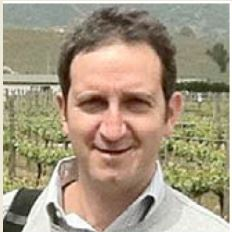New Trends in Membrane Preparation and Applications
A special issue of Molecules (ISSN 1420-3049). This special issue belongs to the section "Materials Chemistry".
Deadline for manuscript submissions: closed (31 October 2019) | Viewed by 40338
Special Issue Editors
Interests: polymeric membranes; sustainable membrane preparation; bio-polymeric membranes; flat membranes; hollow-fibers; nano fibers; membrane preparation; membrane characterization; pervaporation; antifouling coatings; self-cleaning membranes; ultra-micro filtration
Special Issues, Collections and Topics in MDPI journals
Interests: polymeric membranes; hollow-fibers; membrane preparation; bio-polymeric membranes; membrane characterization; pervaporation; antifouling coatings; self-cleaning membranes; ultra-micro filtration; sustainable membrane preparation
Special Issues, Collections and Topics in MDPI journals
Special Issue Information
Dear Colleagues,
Over the last decades, we have witnessed a continuous increasing interest in the production and utilization of polymeric membranes in a wide variety of applications. The possibility of producing membrane with different tailored structures and properties allows their use in the most disparate processes. Therefore, membranes can be prepared using a broad spectrum of techniques, depending on both the membrane material adopted and the final application. Based on the preparation techniques and conditions selected, in fact, it is possible to vary the membrane morphology and properties.
Today, membranes represent a very well-established technology in desalination (e.g., reverse Osmosis), biomedical applications (e.g., hemodialysis) and wastewater treatment (e.g., membrane bio-reactor), recovery of added value products by fractionation and concentrations applications (e.g., pressure-driven membrane processes), and in gas and vapor separation (e.g., gas membranes or membrane contactors).
In this Special Issue, researchers are invited to contribute original research papers, as well as review articles, related to the preparation, characterization, and application of polymeric, mixed matrix, and inorganic membranes, in both flat and hollow-fiber configuration. We are particularly interested in articles focusing on innovative aspects in the preparation and application of membranes with tailored and unique features. Potential topics include, but are not limited to:
- Advanced membrane preparation techniques;
- Membrane functionalization and application;
- Sustainability in membrane preparation;
- Study of the effect of operating conditions and process parameters on membrane morphology and performance;
- Application of high performing membranes in selected membrane processes.
Dr. Alberto Figoli
Dr. Francesco Galiano
Guest Editors
Manuscript Submission Information
Manuscripts should be submitted online at www.mdpi.com by registering and logging in to this website. Once you are registered, click here to go to the submission form. Manuscripts can be submitted until the deadline. All submissions that pass pre-check are peer-reviewed. Accepted papers will be published continuously in the journal (as soon as accepted) and will be listed together on the special issue website. Research articles, review articles as well as short communications are invited. For planned papers, a title and short abstract (about 100 words) can be sent to the Editorial Office for announcement on this website.
Submitted manuscripts should not have been published previously, nor be under consideration for publication elsewhere (except conference proceedings papers). All manuscripts are thoroughly refereed through a single-blind peer-review process. A guide for authors and other relevant information for submission of manuscripts is available on the Instructions for Authors page. Molecules is an international peer-reviewed open access semimonthly journal published by MDPI.
Please visit the Instructions for Authors page before submitting a manuscript. The Article Processing Charge (APC) for publication in this open access journal is 2700 CHF (Swiss Francs). Submitted papers should be well formatted and use good English. Authors may use MDPI's English editing service prior to publication or during author revisions.
Keywords
- Polymeric membranes
- Inorganic membranes
- Mixed matrix membranes
- Membrane preparation
- Membrane characterization
- Hollow fibers
- Water and Wastewater treatment
- Gas and Vapor Separation
- New solvents in membrane preparation
- New polymers in membrane preparation







